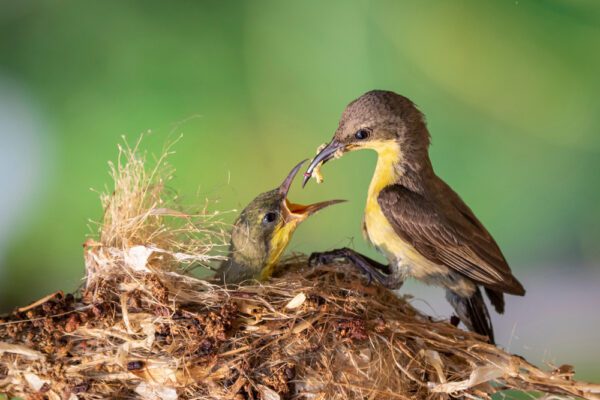
13 July 2022
Birdnesting: a new temporary form of co-parenting
When parents separate, in practice we see that children often alternately reside with each parent.
But why should the children move weekly when the parents can also change homes? More and more parents who are separating are opting for this ‘new’ form of co-parenting, which is called birdnesting. In birdnesting, the children stay in the former marital home while the parents take turns caring for them. How exactly does birdnesting work and is it an option for you? In this blog, I will explain what birdnesting involves and explain the advantages and disadvantages.
What is birdnesting?
Birdnesting is also seen as the ‘new’ form of co-parenting in the Netherlands. While this form of co-parenting has been around for a while, we are seeing that birdnesting is an increasingly popular option possibly due to housing scarcity. In birdnesting, instead of the children residing with the parents alternately, the parents reside with the children alternately. In addition to the parental home where the children reside, the parents have another residence where they stay when they are not with the children. This can be a shared second home or studio, a private home or guest accommodation.
Bird nesting can be a temporary solution. For example, for the duration of the divorce proceedings or until you and your former partner have made definitive arrangements about the care and contact arrangement and/or the property settlement. Birdnesting can also be a definitive solution.
There are no set rules for a birdnesting schedule. It is up to you to decide how this arrangement will be shaped. Together with your former partner, you should explore what works for you and the children. In practice, we find that parents often change every other week and that the change occurs on Friday afternoon or mid-week on Wednesday. Changing more often during the week is also possible, but often not feasible in practice. The arrangement then often leads to more distress for both the children and the parents.
Regardless of the care arrangement you choose, the most important thing in birdnesting is that you and your former partner are able to make good arrangements for both practical and financial matters. After all, you continue to share a home and the situation must be workable for both you and your children.
The advantages of birdnesting
The main reason for parents to choose birdnesting is the welfare of their children. Birdnesting means that children do not have to say goodbye to their familiar surroundings and safe home, as yet. This not only provides stability, continuity and structure, but also allows the children to slowly get used to the divorce. In addition, the likelihood of loyalty problems is reduced and there is no distressing change in the home situation. The children will also experience less stress from complicated care schedules or moving days, and will temporarily remain in their own home.
Birdnesting also offers advantages for the parents. During the divorce procedure/negotiation phase, you no longer have to live under the same roof as your former partner. Nor are you forced to make major decisions at short notice, such as about your housing. You have more time to look for a long-term solution. The children do not need to move several times and you have more time to arrange things.
The disadvantages of birdnesting
Birdnesting has many advantages, especially for the children, but it also has disadvantages. It can be quite a challenge to get the format right. As a parent, a lot is asked of you. You are forced to have a lot of contact with your former partner and you will need to make clear arrangements. You also remain financially linked to each other. This may hinder you in making a new start without your former partner. Birdnesting is also not financially feasible for everyone, since your living expenses may double.
Agreements on birdnesting
As mentioned, birdnesting requires a great deal of cooperation. What works for one partner, may not work for the other. If you are considering this, it is advisable to make proper arrangements and record these in a parenting plan. Such as the following:
- Who lives in the family home on which dates?
- How are the costs distributed?
- How do parents keep each other informed about the children?
- Is there a time slot for the transfer and how will this take place?
- How are decisions made regarding the family home? Such as who will do the grocery shopping and cleaning.
- How is the birdnesting evaluated?
- How does this affect any new partner?
It can be complicated making mutual arrangements on the above or other care and contact arrangements. If you would like assistance with this, I will be happy to help you. Please contact me here.
8 April 2024
Prenuptial agreements: the regular set-off clause
A common provision in prenuptial agreements is the ‘regular set-off clause’.
Read more
1 April 2024
Does loss of income mean higher child maintenance?
A parent may suffer a loss of income due, for instance, to not being able to find a new job. Under the law, child maintenance may be adjusted in such circumstances.
Read more
21 March 2024
15 years of parenting plan
This month, the mandatory parenting plan celebrates its 15th anniversary. Following a divorce or dissolution of a registered partnership, you will certainly need a parenting plan if you have minor children together. A parenting plan is also mandatory if you have been in a relationship and have joint parental authority.
Read more
